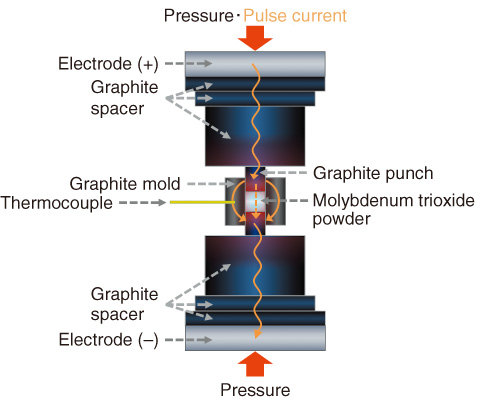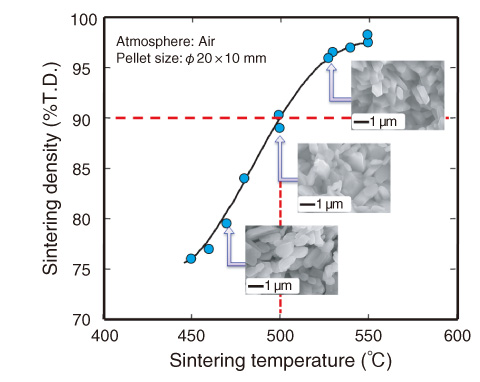
Fig.13-11 Schematic diagram of spark plasma sintering method

Fig.13-12 Relationship between sintering temperature and sintering density of MoO3 pellet
In Japan, about 1400000 cases are diagnosed using nuclear medicine every year. About 900000 of these nuclear medicine diagnoses use technetium-99m (99mTc), whose half-life is 6 h. 99mTc is produced as a daughter nuclide from molybdenum-99 (99Mo), whose half-life is 66 h. The quantity of 99mTc demanded in Japan is ranked as second in the world, after only the U.S.A., but all of the 99mTc is imported from abroad. A stable supply of 99Mo in Japan might be difficult to obtain because of troubles with transportation and other problems. Therefore, the establishment of domestic production of 99Mo is an important issue for Japan. Two methods are used to produce 99Mo by nuclear reactors, the nuclear fission method and the neutron activation method [(n, γ) method]. The Japan Materials Testing Reactor (JMTR) is developing the (n, γ) method for 99Mo production from the viewpoints of physical protection of nuclear materials and the reduction of highly radioactive waste.
99Mo is produced in molybdenum trioxide (MoO3, sublimation temperature: 795 °C) by the (n, γ) method in nuclear reactors. Next, irradiated MoO3 is resolved into 6M sodium hydroxide (NaOH), and then 99mTc is extracted from the solution. The technical issues in this method are the establishment of a high production rate of 99Mo and the extraction of 99mTc with a high purity and radioactivity concentration. For that purpose, a fabrication method for high-density MoO3 pellets was also developed in this study to increase the amount of 98Mo per unit volume and to optimize the characteristics such as solubility.
As the first step, fabrication tests of high-density MoO3 pellets were conducted using the spark plasma sintering method, as shown in Fig.13-11.
This method results in a high-purity pellet because no binder is added, and the sintering temperature is low. The pellet properties were measured for various sintering temperatures and sintering densities. In this result, the target density was attained by sintering at a temperature above 500 °C, as shown in Fig.13-12. Scanning electron microscopy observation of the MoO3 pellet revealed that grain growth did not occur below a sintering temperature of 550 °C, and the grain size of the MoO3 pellet was almost the same as that of the starting powder. Next, MoO3 pellets were oxidized in atmosphere as an oxidization treatment, and the solubility into 6M NaOH was measured. The result confirmed that the MoO3 pellet dissolved within the target time, and the obtained solution was clear and exhibited high purity.
The above results demonstrate that a technique for fabricating high-density MoO3 pellets from an irradiated target was established, and the prospects are bright for domestic 99Mo production by the (n, γ) method.
The present study was performed as part of the program “Technology development of domestic 99Mo/99mTc production by (n, γ) method in JMTR” commissioned by the Ministry of Education, Culture, Sports, Science and Technology of Japan (MEXT).